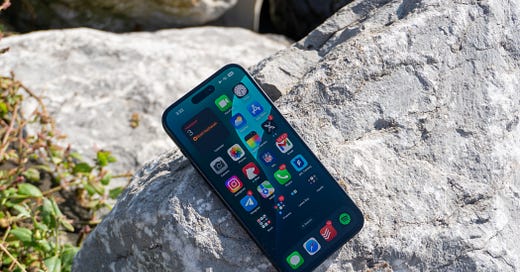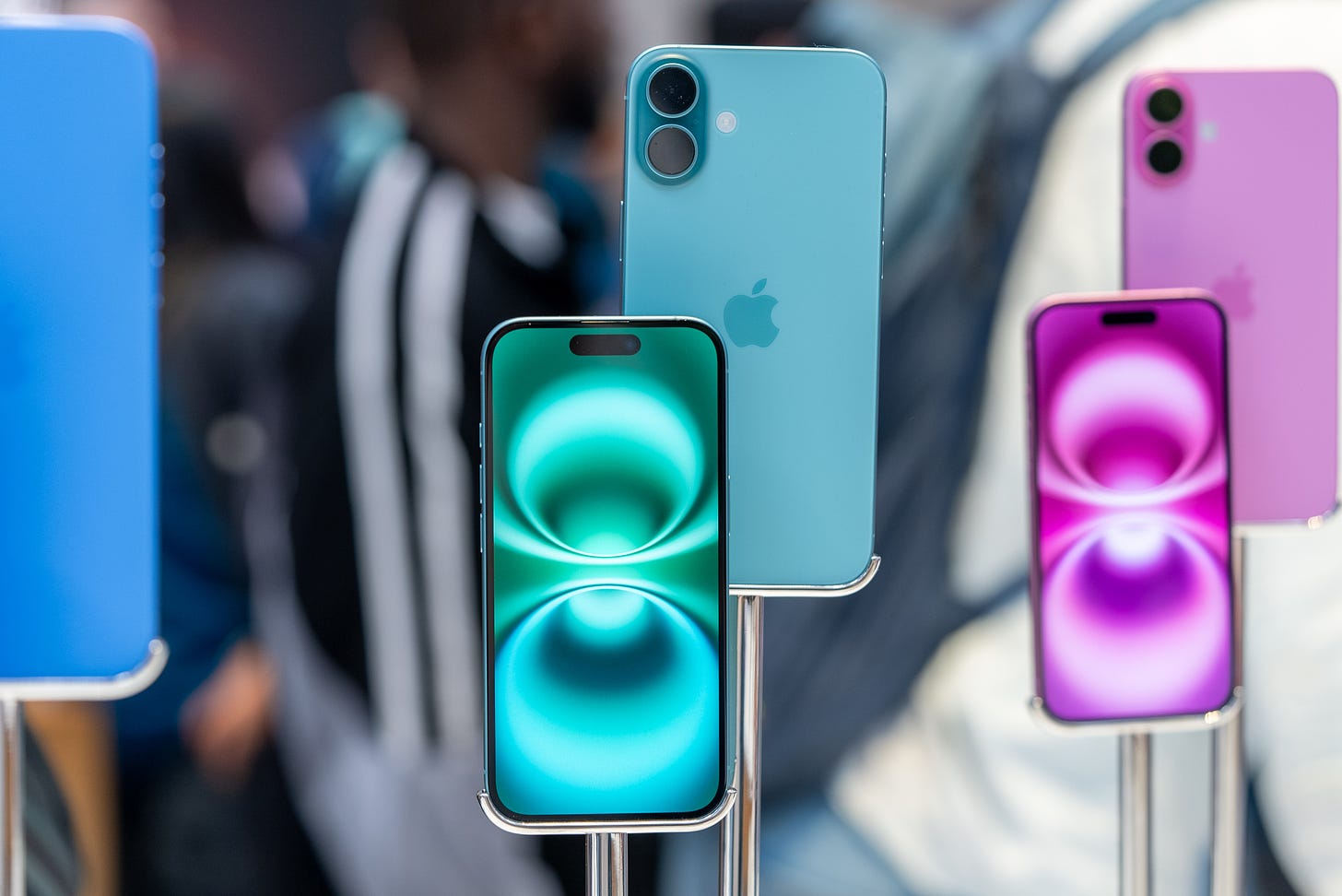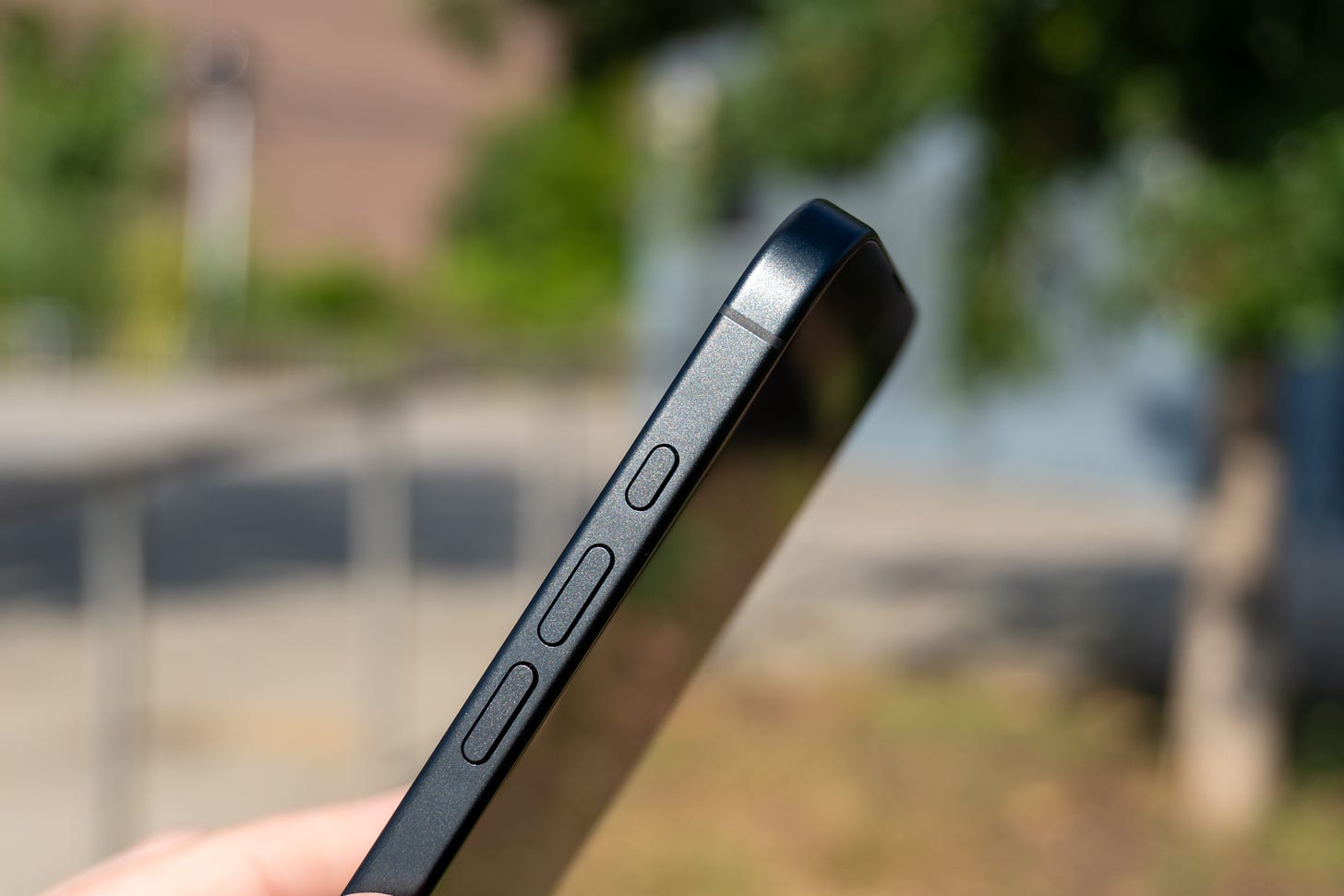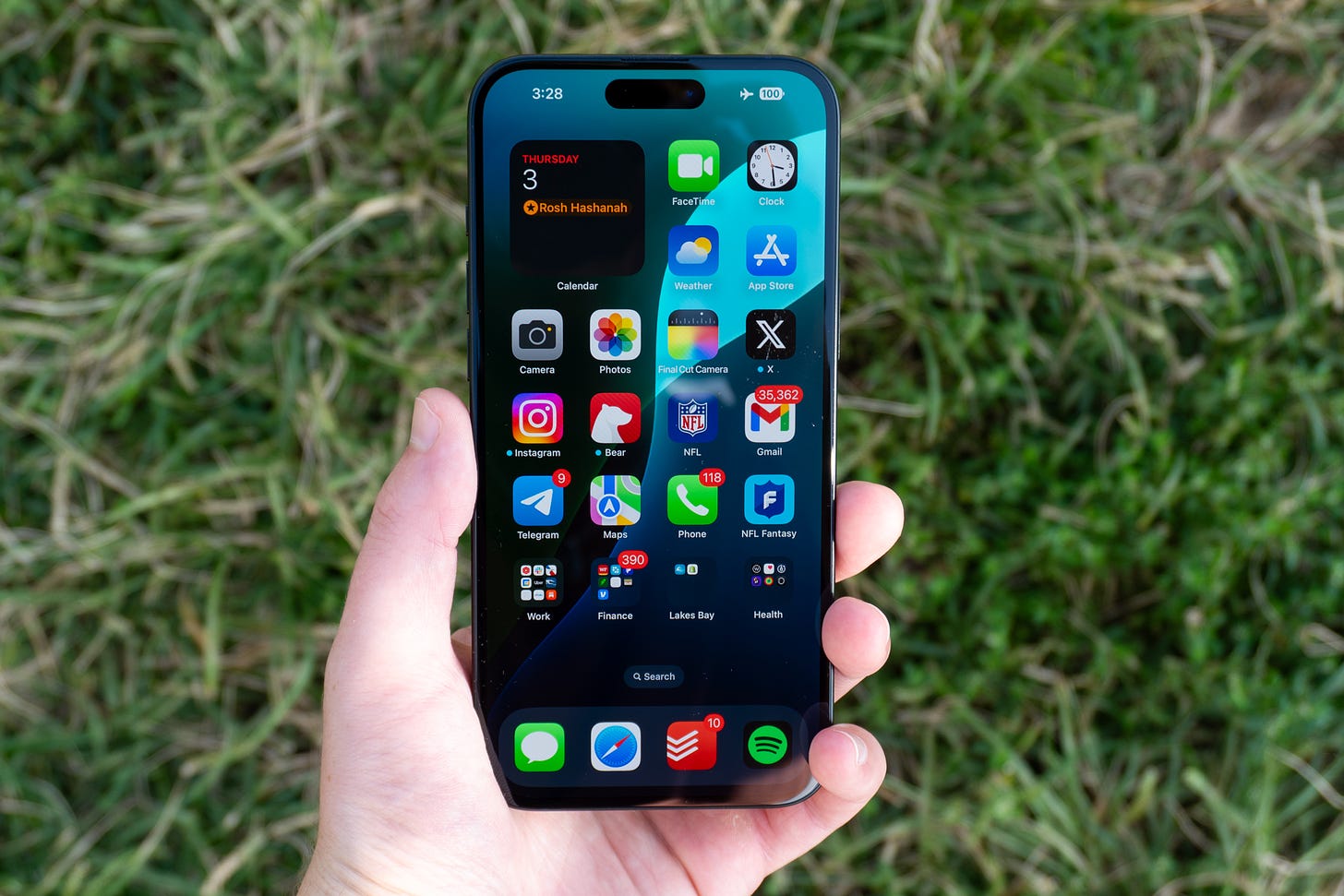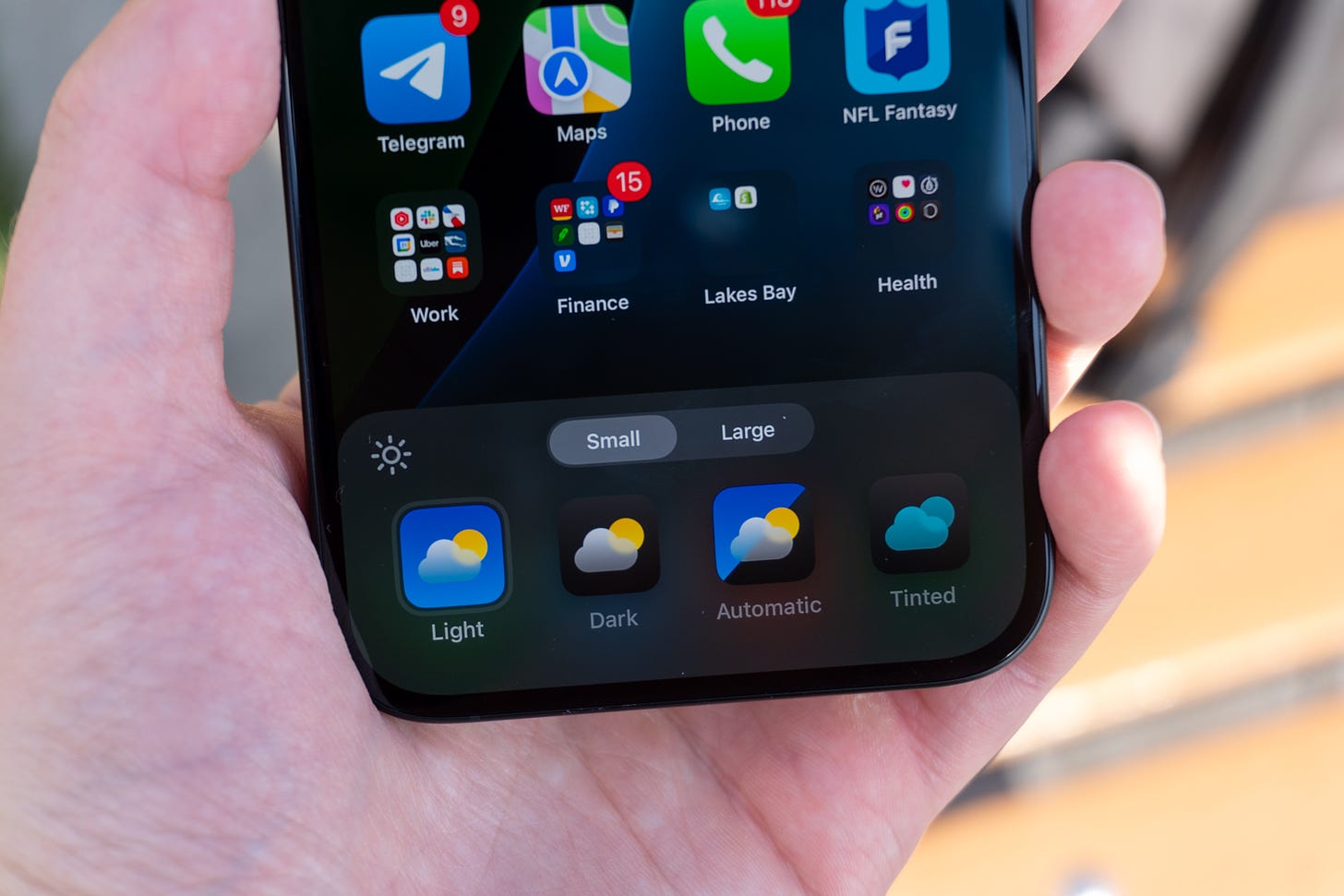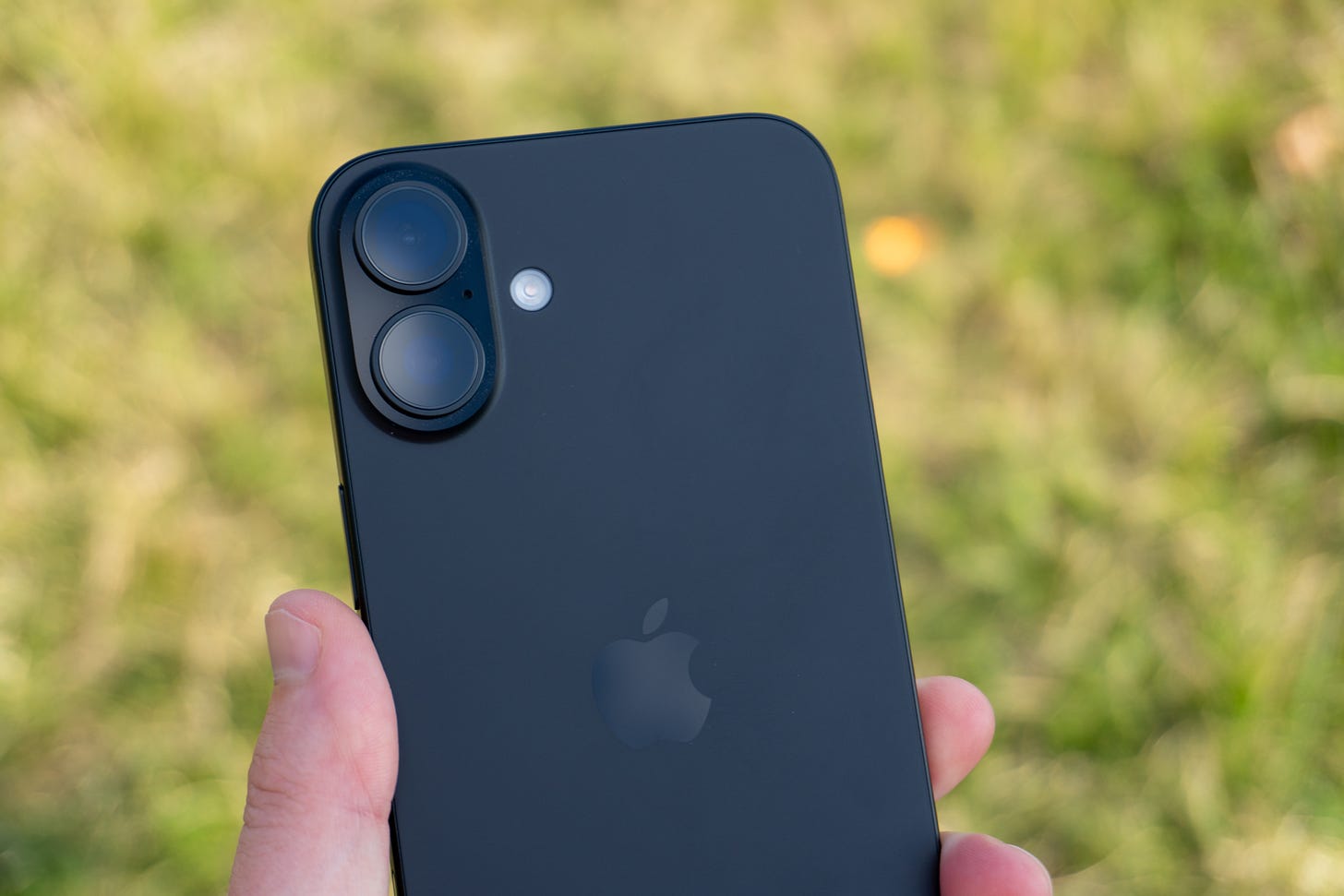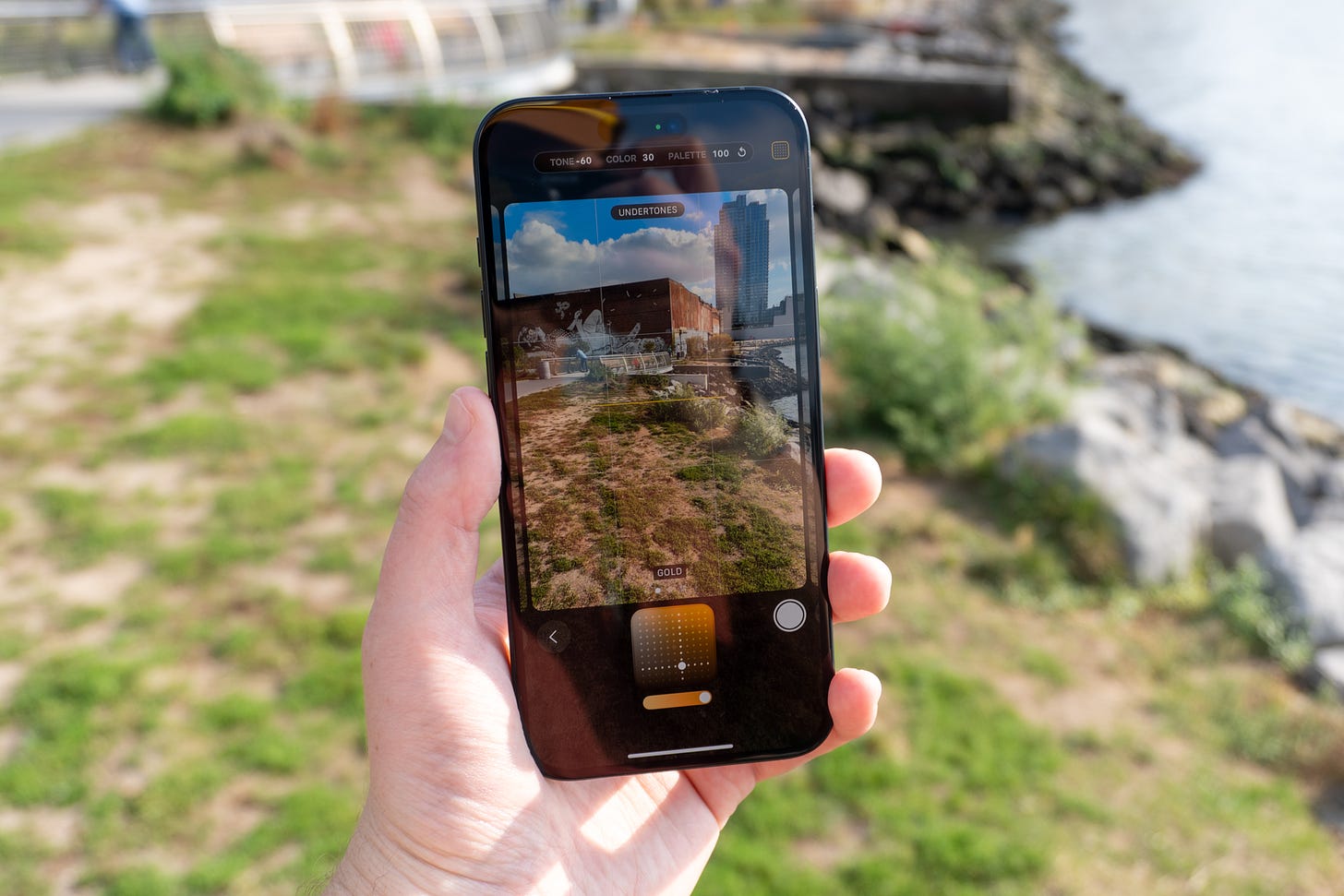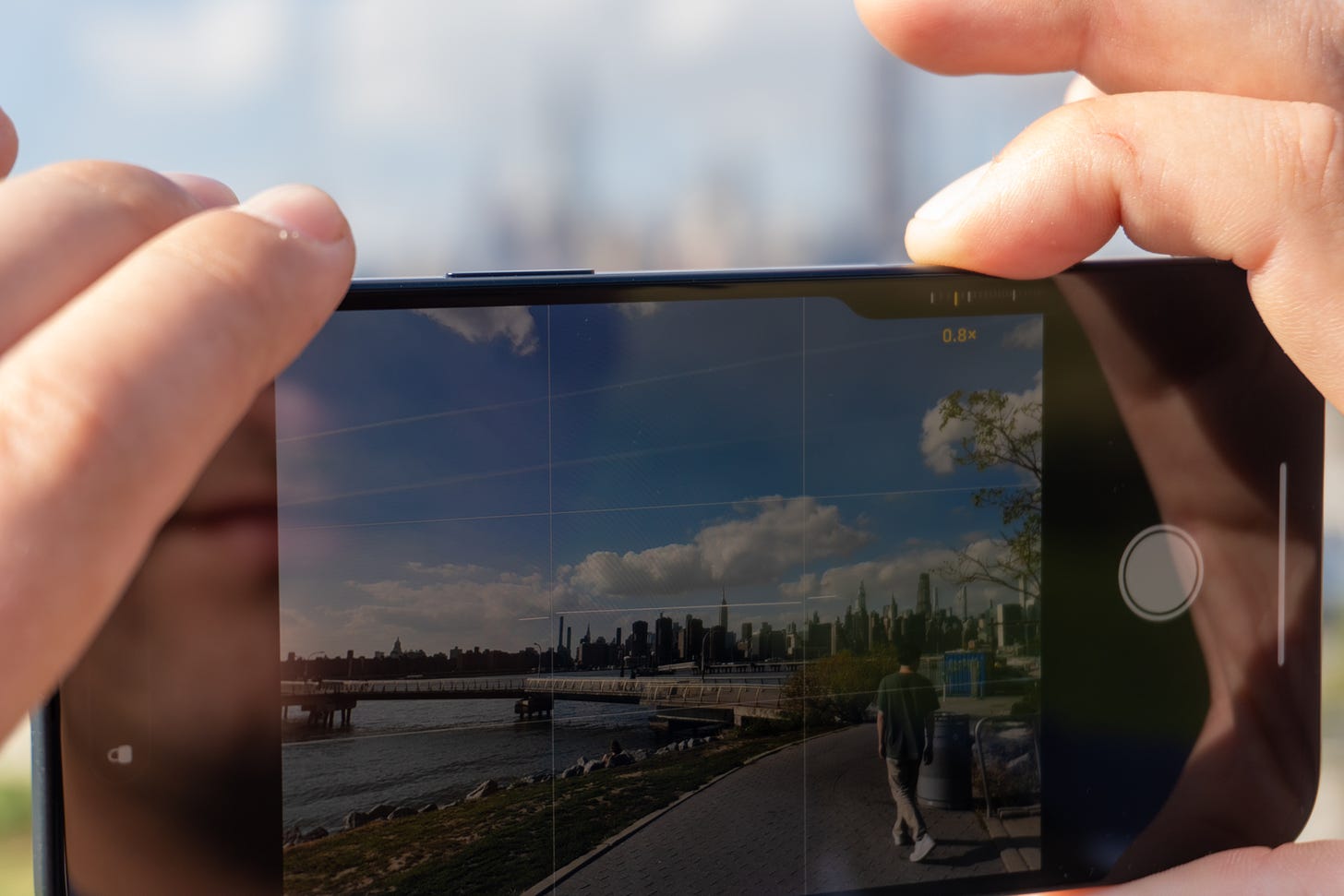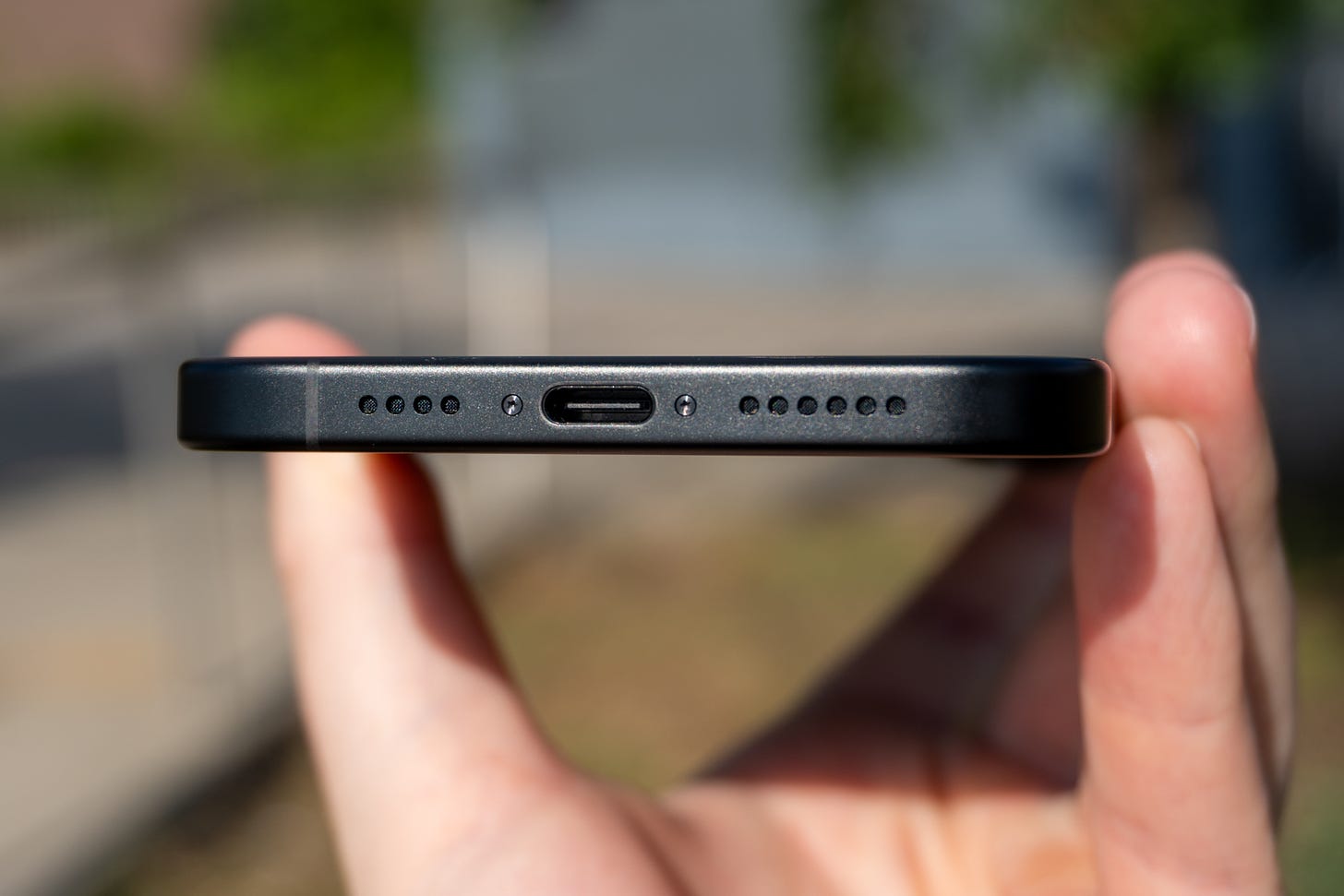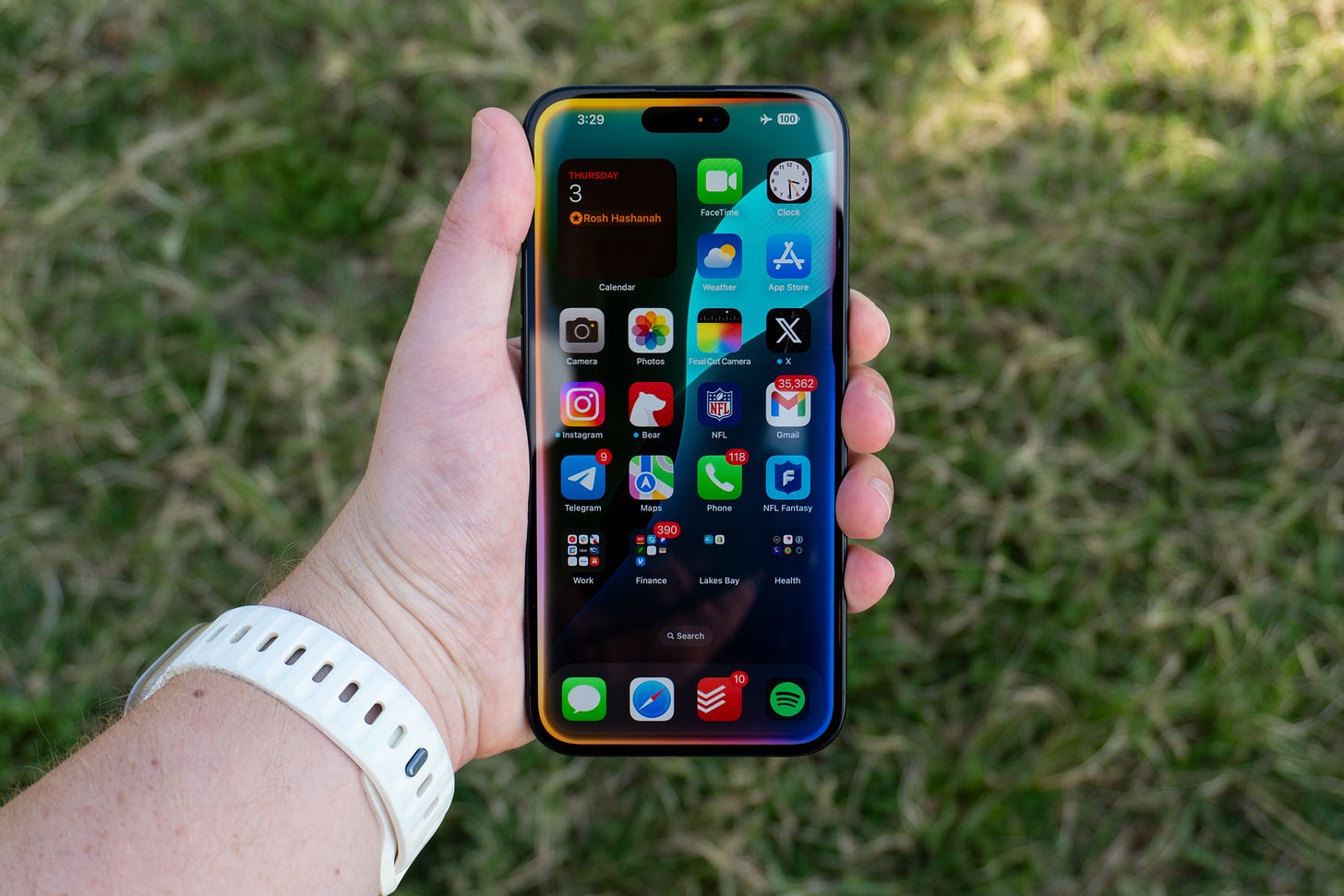
iPhone 16 Plus review: a big screen with AI at an affordable price
The larger version of the iPhone 16 is worth considering if you want a big screen without spending $1,200
🏆 Review score: 4/5
Pros
✅ Great cameras that you can depend on
✅ Camera Control can be super helpful
✅ Simple, elegant design with vibrant colors
✅ The 6.7-inch display is gorgeous
✅ All-day battery life
✅ Fantastic performance
✅ Apple Intelligence support
Cons
❌ The 60Hz refresh rate is getting old
❌ Charging speed is slower than most Android phones
❌ No dedicated telephoto camera
❌ No always-on display
I’ve been testing the Apple Intelligence-ready iPhone 16 Plus for two weeks, and it’s one of the best smartphones you can buy. Apple’s larger version of the base iPhone 16 doesn’t come with an exclusive set of camera or performance features to entice you to buy it over the smaller version; instead, it has a bigger screen and a bigger battery, two features that improve the fundamental iPhone 16 experience to the point where this should be the default iPhone to consider when it’s time to upgrade. Plus, the iPhone 16 colors are really good this year, and it puts up one heck of a fight against the Google Pixel 9 and Samsung Galaxy S24.
I realize this sounds like hyperbole, but it’s true. Aside from some features I want to see Apple improve in the iPhone 17, this is a solid phone. Those with an iPhone 15 Plus can feel free to skip it since the year-over-year upgrades aren’t that exciting, but for anyone with an older iPhone, it’s worth checking out.
Pricing and where to buy
Starting at $899
Available in Ultramarine, Teal, Pink, Black, and White
Design
👕 Familiar yet fresh. There’s no question that the iPhone 16 Plus looks like the iPhone 15 Plus, but Apple found some ways to make it feel fresh for 2024 and beyond. The camera sensors have been realigned vertically to give the phone’s back a different look, while also enabling spatial photo and video capture for Apple Vision Pro users. The back glass is frosted and the aluminum is matte, so the whole thing feels really comfortable to hold. I’ve been using Apple’s first-party silicone case (which made it on our best iPhone 16 cases list) and it’s added a bit of piece of mind while handling this glass and metal sandwich.
🌈 Fun colors that stand out. The iPhone 16 and 16 Plus come in the best colors that Apple’s shipped in years. Everyone I talk to is excited about them, and so am I. The iPhone 16 Plus comes in Ultramarine, Teal, Pink, Black, and White. I was given the Black unit to review which, granted, is the most boring of the lineup. But if you want something that’ll truly stand out, you have the option this year, opposed to last year’s pastel iPhone 15 series which made it look like Apple ran out of ink.
🤳 It’s big but still manageable. The iPhone 16 Plus is a pretty big phone. With a 6.7-inch screen, it’s by no means a one-handed phone for most people. Yet it’s also pretty manageable. The device is 7.8 mm thin and weighs 199 grams, which helps it to feel less like a brick and more like a large surfboard. Sure, you’ll be doing a one-handed shimmy to reach things at the top, but at least the 16 Plus doesn’t feel as gargantuan as something like the Pixel 9 Pro XL or iPhone 16 Pro Max.
🟠 The Action button arrives. One of the biggest design changes on the iPhone 16 is the inclusion of the Action button, which hammers another nail in the mute switch’s coffin. This is the same Action button from the iPhone 15 Pro and 16 Pro, which means you can long-press it to trigger things like the flashlight, camera, do not disturb, Siri Shortcuts, and more. It’s more useful than the mute switch ever was, so it’s nice to see it come to Apple’s more affordable iPhone series. A future iOS 18 update will also let you dynamically change its function based on the time of day.
🌊 Still plenty waterproof. While it hasn’t improved year-over-year, the iPhone 16 Plus still comes with IP68 water and dust resistance. That’s plenty to protect your phone from accidental splashes and drops in the dirt, and it keeps the device on par with the rest of the competition.
Display
📱 Big, bright, colorful delight. Apple always includes some of the best displays you’ll find on a smartphone, and the iPhone 16 Plus is no exception. The 6.7-inch Super Retina XDR is bright and colorful with the perfect amount of saturation. Its 2796 x 1290 resolution keeps everything sharp, while the 2,000 nits of brightness means you can see everything on the screen even in direct sunlight. I’ve enjoyed watching TV shows like Futurama on it, as well as reading about the latest PS5 Pro news. You don’t get the ultra-thin bezels of the 16 Pro series, but that’s okay. Everything still looks great on this screen, as you’d expect from the latest iPhone.
🦥 The 60Hz refresh rate is annoying. My biggest gripe with the screen is its 60Hz refresh rate. That might sound fast until you consider that the 16 Pro and Pro Max refresh at 120 times per second. Thanks to ProMotion, the 120Hz refresh rate on the higher-end iPhones feels fast and responsive, whereas the regular 16 feels slow and choppy. Once you use a 120Hz phone for a while, you can’t go back to 60Hz, so it drove me crazy having to adjust to it during my review. Thank goodness that the iPhone 17 is expected to get ProMotion.
🕐 No always-on display. On top of the whole refresh rate thing, Apple also hasn’t brought always-on displays to the regular iPhone 16. I don’t typically use the always-on display, but I know there are a lot of users who have been asking for it. Unfortunately, this isn’t the year for that. Maybe Apple will tack it onto the iPhone 17 and iPhone 17 Air next year, but we’ll have to wait to find out.
Specs and performance
🏎️ The A18 is a beast. The A18 processor in the iPhone 16 series is a beast. There’s no way to stress it enough, this chip is insanely powerful. From gaming to multitasking and everything in between, it can handle anything you throw at it. This thing hasn’t choked once, and I doubt that’ll happen any time soon.
It’s faster than the Snapdragon 8 Gen 3 found in the Galaxy S24 Ultra, and it runs laps around the Tensor G4 in the Pixel 9 series. It’s one of the fastest chips you’ll find in a smartphone, only second to the A18 Pro in the iPhone 16 Pro.
🧑💻 8GB of RAM makes a difference. The chip is paired with 8GB of RAM, which is the first time an iPhone has come with that much RAM. In my testing, it makes a difference. Not only does it give the phone headroom for Apple Intelligence when it shows up, but it also means your apps will stay alive in the background, and you’ll be able to hop around your phone much quicker. Everything feels more instantaneous, helping the 16 Plus feel noticeably quicker than expected.
🧊 Keepin’ things cool. Apple also improved temperature management on the iPhone 16 series. Last year’s phones tended to get warmer than normal for no obvious reason, an issue I faced regularly with my iPhone 15 Pro. But with the iPhone 16 series, Apple has rearranged the internal layout to improve airflow. It’s also added a recycled aluminum thermal substructure which, in layman’s terms, means the materials inside the phones will stay cooler for longer.
It should be most notable while gaming, where you can see a 30%improvement in performance. I’m not much of a gamer, but I did notice that while taking pictures in the warm sun and watching videos in the back of a Greyhound bus, my phone would stay much cooler than the iPhone 15 series did. It’s also harder to get the 16 Plus to heat up at all.
🏃 Ready for the long run. The iPhone 16 Plus (and the entire iPhone 16 series as a whole) is designed to last for years down the road. With the level of performance headroom you get from the A18, combined with the 8GB of RAM, you could comfortably use this thing for 5-7 years down the line and still enjoy solid performance. Plus, you’ll probably still get iOS updates; the iPhone XR from 2018 is getting iOS 18, for example, so it’s fair to say the 16 Plus will likely get iOS 24.
Cameras
📸 The 48MP main camera is great. Surprise, surprise, the iPhone 16’s main camera is great. The new 48MP Fusion sensor almost matches the iPhone 16 Pro’s, so you can capture solid photos in both broad daylight and at night. I went around and tested it in all sorts of lighting conditions, and I was impressed with the results. Photos are regularly sharp and clear with vibrant color reproduction. Contrast and shadows are still a bit too heightened for my liking, but that can be fixed with a Tone adjustment (which I’ll get to in a bit).
I captured some of my favorite photos at Apple’s Fifth Avenue Store in New York City. You can see how well the sensor captured the crowds at the iPhone 16 launch event, as well as during the night before, while we saw the store’s new glowing lights. You can even shoot full-fledged 48MP photos if you want to.
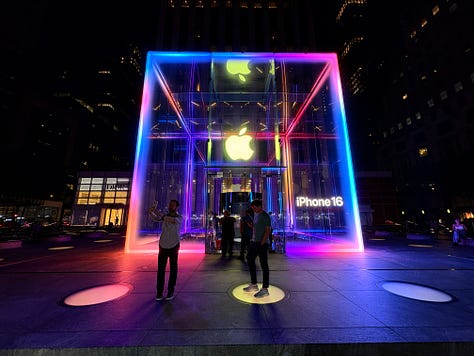
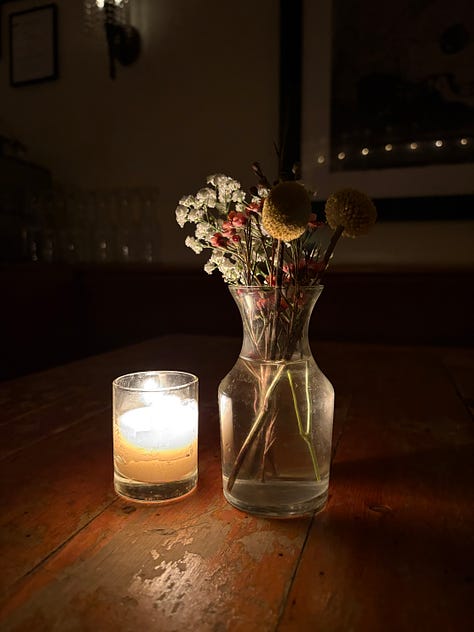


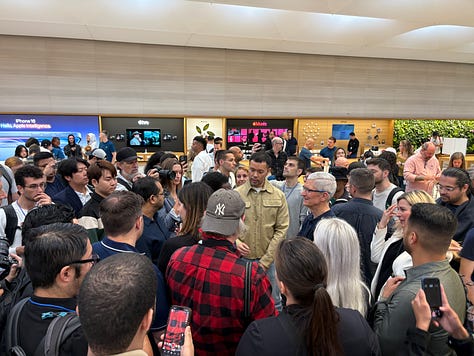
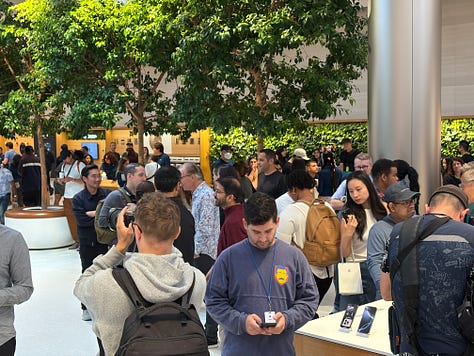
🔭 There’s no telephoto lens, but Apple accommodates. The iPhone 16 and 16 Plus don’t include a telephoto camera, which I miss since my personal iPhone has one. Luckily, the 48MP sensor is sharp enough that you can use the middle 12MP for 2x lossless zoom photos, imitating the results of a telephoto lens. Granted, it’s not the 5x zoom you get on the more expensive 16 Pro, but it gets the job done. I was actually impressed with the quality of 2x shots; you can see them below in some portraits I took of the latest iPhones on display at Apple Fifth Avenue.
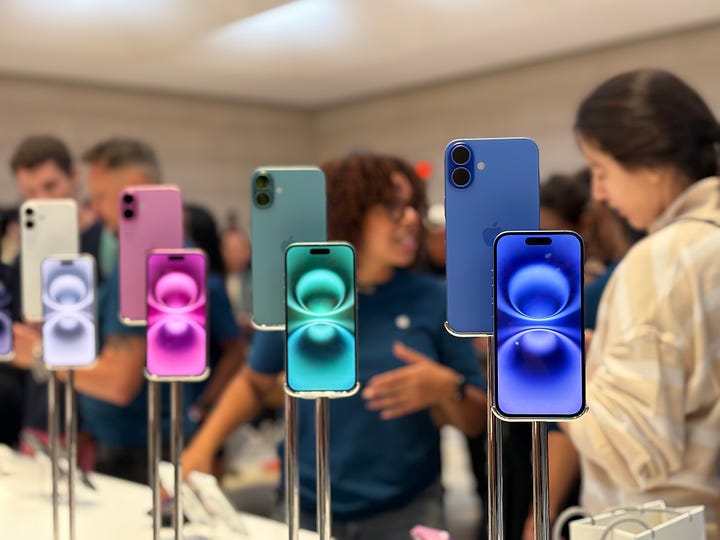

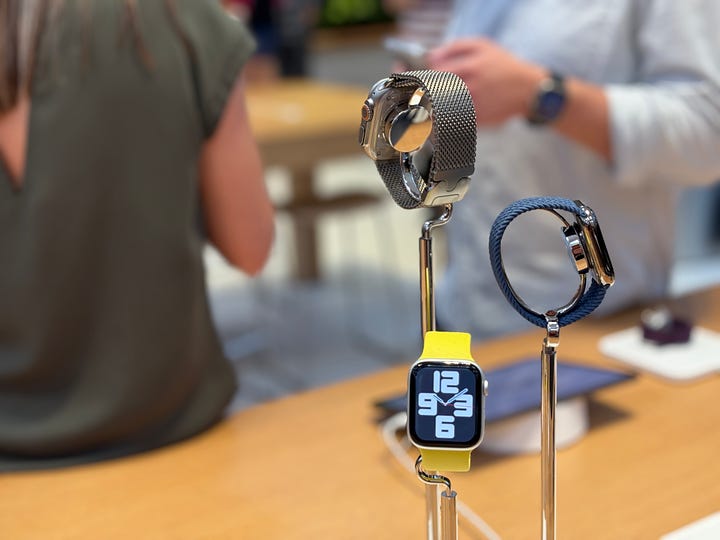
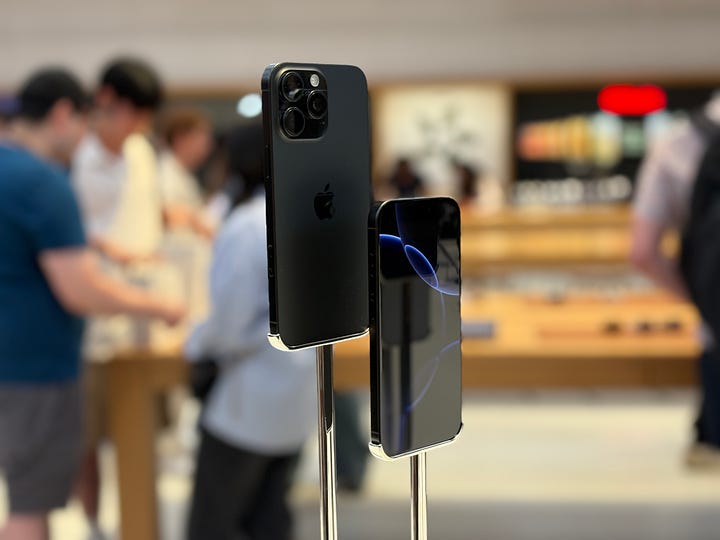
🏞️ The 12MP ultra-wide is good enough. The big news with the iPhone 16 Plus ultra-wide is that it supports autofocus, so you can take up-close macro photos with it. It’s a cool feature, but it’s otherwise a boring upgrade. That also means the 12MP sensor hasn’t gotten significantly better compared to last year, which is okay. Photos I’ve taken are generally solid with good color and contrast, but detail is a bit lacking, especially in darker lighting conditions. Next year, I’d like to see a bigger update in this department.
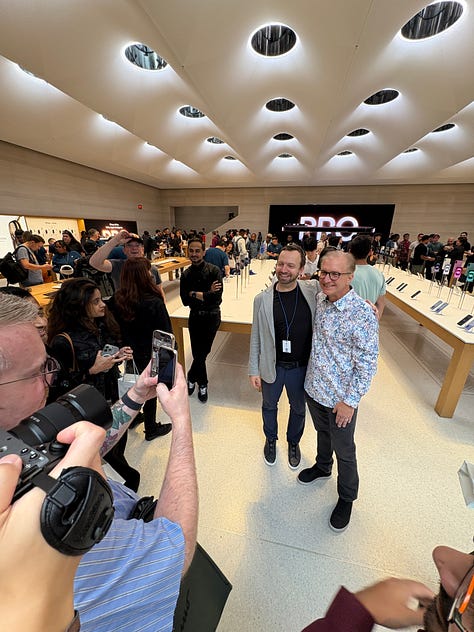


🖼️ Photographic Styles and Tone make a huge difference. The most significant improvement to the iPhone 16’s camera is Photographic Styles, which have been revamped with 15 different styles to choose from. After you take a picture, you can then edit the style to your liking or completely remove it altogether, which isn’t something you could do before. The style will also sync through iCloud so you can edit pictures on other Apple devices like your iPad or Mac.


Accompanying the new Photographic Styles is Tone, which gives you a D-pad that can be used to adjust the intensity of colors, add contrast and richness to shadows, and more. I’ve found myself using Tone a whole lot to restore the shadows in my pictures, which are oftentimes lost by the iPhone’s default camera settings.
Between the two features, you can land some pretty stellar shots. I’m a fan of using the Gold style and adding some punchy contrast with Tone to give my sunset photos a new life. Walking around NYC, I enjoy the Neutral style with a touch of contrast and less saturation for an old-school New York photoshoot.
One of the big downsides is you can’t save your own Tone presets, so you’ll have to adjust the settings every time you take a picture. Luckily, you can a style as your default, so you’ll be a step ahead before capturing your photo.
Overall, these camera improvements make recommending the iPhone 16 Plus extremely easy, even for those with an iPhone 15 Plus. You can do so much more with your photos thanks to these features, and it can make a big difference if you aren’t a fan of your current iPhone’s camera quality.
🎮 Camera Control is… interesting. “Interesting” is the only descriptor I can come up with for the Camera Control. It’s a new haptic button on every iPhone 16 that opens the camera app and snaps a picture You can also half-press and swipe across the surface of the button to sift through shooting modes. I’ve been using it a lot, and I’ll be completely honest: I’m not really used to it.
That’s saying something after spending two weeks with this phone. I thought by now, my mind would immediately think to hold the phone sideways, snap pictures with the button, and control things like zoom and Tone by swiping back and forth. Instead, my muscle memory has picked up is hitting the button to open the camera app. Afterward, I find myself using the on-screen controls far more often.
Over time, Camera Control should become more useful. Third-party apps will integrate with it, you’ll be able to lightly press down on it to focus, and Apple will build Visual Intelligence into it so you can get more information on real-life objects and places around you. None of that is here today, though. Right now, it’s a button on the side of your phone that you can use to control the camera if you want. It feels a little redundant because of that, so it’s going to take some time before I have a definitive opinion on it.
🤳 Selfies and video quality are as good as ever. The 12MP selfie camera hasn’t been improved compared to last year, but it’s still a solid shooter for capturing all the moments with your friends that you want. I’ve taken selfies in all sorts of lighting conditions and each one has passed the post-to-Instagram test (a.k.a. It passes the grade for my Instagram grid).
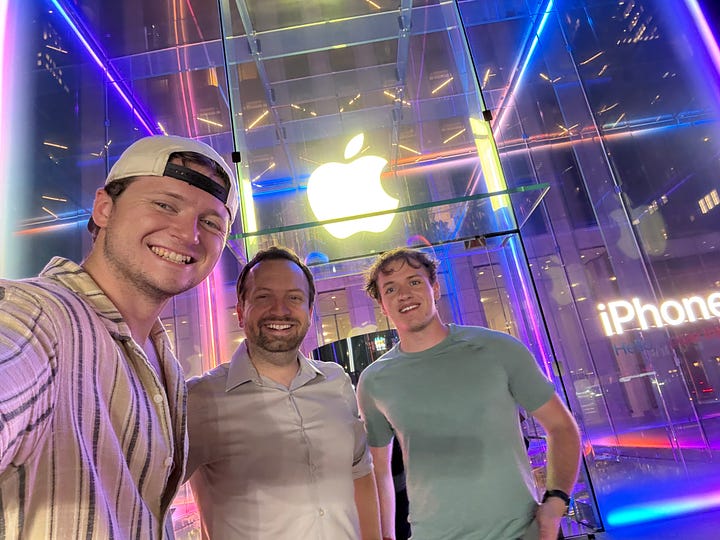
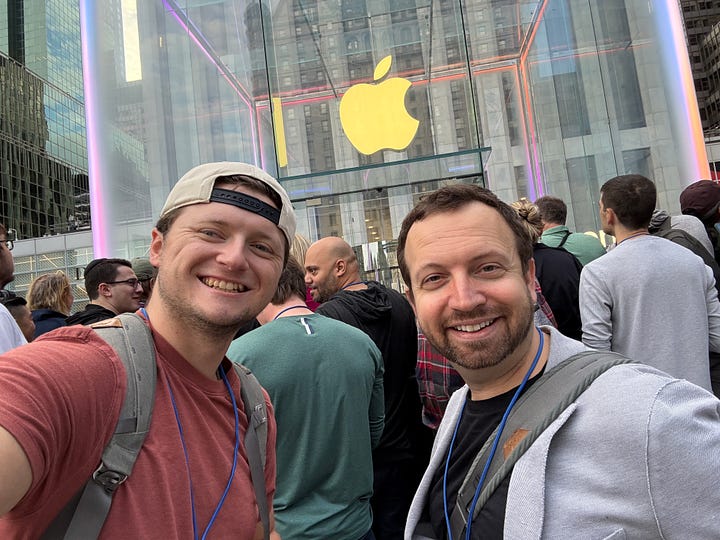
Video quality is also incredible, which has been the case with iPhones for years. You can shoot at up to 4K at 60 frames per second, and everything looks spectacular. The iPhone 16 Pro captures slow motion video at 4K 120 frames per second so your footage looks smoother than ever before, and I wish it was included on the regular iPhone 16 as well. It’s not a dealbreaker, but it’s something you’ll miss out on if you don’t buy a Pro.
Battery life
🔋 All-day endurance. The iPhone 16 Plus has a 4,674mAh battery and in my testing, this phone has no issue lasting a full day. I can get through a 16-hour day of mixed to heavy usage and have somewhere around 20-30 percent left in the tank. While I hesitate to call this a two-day phone, I think most people will easily be able to cruise through a full day on a single charge and – potentially – into the next day (if your smartphone usage is on the lighter side).
It’s worth pointing out that while the iPhone 15 Plus was the longest-lasting iPhone you could buy last year, the same can’t be said for the 16 Plus. That honor goes to the iPhone 16 Pro Max, which has an even larger battery and can last nearly two full days. Don’t get me wrong, the 16 Plus still has great endurance, but if you want the very best, you should look to the 16 Pro Max.
🧲 MagSafe charging gets a boost to 25W - under one condition. Apple updated the entire iPhone 16 series with faster 25W MagSafe wireless charging. While that means your iPhone will juice up a lot quicker without having to plug it in, you’ll need to purchase Apple’s new MagSafe Charger for $39, Sadly, it’s the charger faster wireless charger on the market, every other MagSafe charger will get you 15W.
⚡ Wired charging needs to be faster. Speaking of charging, Apple needs to upgrade the wired charging speed on the iPhone 16. Rumors pointed to the phones getting an upgrade to 45W, which would’ve aligned it with what Samsung’s phones are capable of. Instead, they all max out around 30W, which is slow by today’s standards. Phones like the OnePlus 12R can charge at 80W, putting every other phone to shame and give you a full battery in a matter of minutes, not hours. Maybe one day we’ll see Apple do something innovative here, but not today.
Software
📲 iOS 18 is a solid update... Every new iPhone comes loaded with iOS 18, which features a plethora of updates like deeper home screen customization, a new Control Center, a redesigned Photos app, a specialized Game Mode, and more. I’ve enjoyed placing my app icons wherever my heart desires on my home screen, sending RCS messages to my Android friends, and keeping track of my passwords with the new Passwords app.
🤖 …but it’s missing Apple Intelligence (for now). The biggest problem with iOS 18 is the fact it’s missing all of the AI features Apple has been marketing to sell the iPhone 16. Apple Intelligence will technically launch with iOS 18.1 with a few select features like notification summaries, the new Siri glowing animation, rewriting text, and object removal in photos with Clean Up. However, none of those features are live yet, at least for average consumers who don’t download the latest beta.
Reviewers (including myself) were given iPhone 16 units with the iOS 18.1 beta pre-installed, so I got to toy around with some of Apple Intelligence during my review. I’m going to test it further ahead of iOS 18.1’s release to the public, so stay tuned. Until then, if you buy an iPhone 16 Plus today, you’ll have to opt-in and download the beta to get out of the AI-less iOS 18.0, which is pretty lame given how prominent AI is in Apple’s commercials for these phones.
Should I buy the iPhone 16 Plus?
The iPhone 16 Plus is a great phone, and it checks a lot of boxes for various users. Here’s a quick and simple breakdown to help you decide whether this phone is right for you.
✅ Yes, if…
You like big screens
You don’t want to spend $1,000 on a phone
You want more control over your photos
You like fun colors
❌ No, if…
You need a telephoto camera (get the iPhone 16 Pro or Pro Max)
You want a smooth display (get the iPhone 16 Pro or Pro Max)
You use an always-on display (get the iPhone 16 Pro or Pro Max)
You want the longest battery life you can get on an iPhone (get the iPhone 16 Pro Max)

